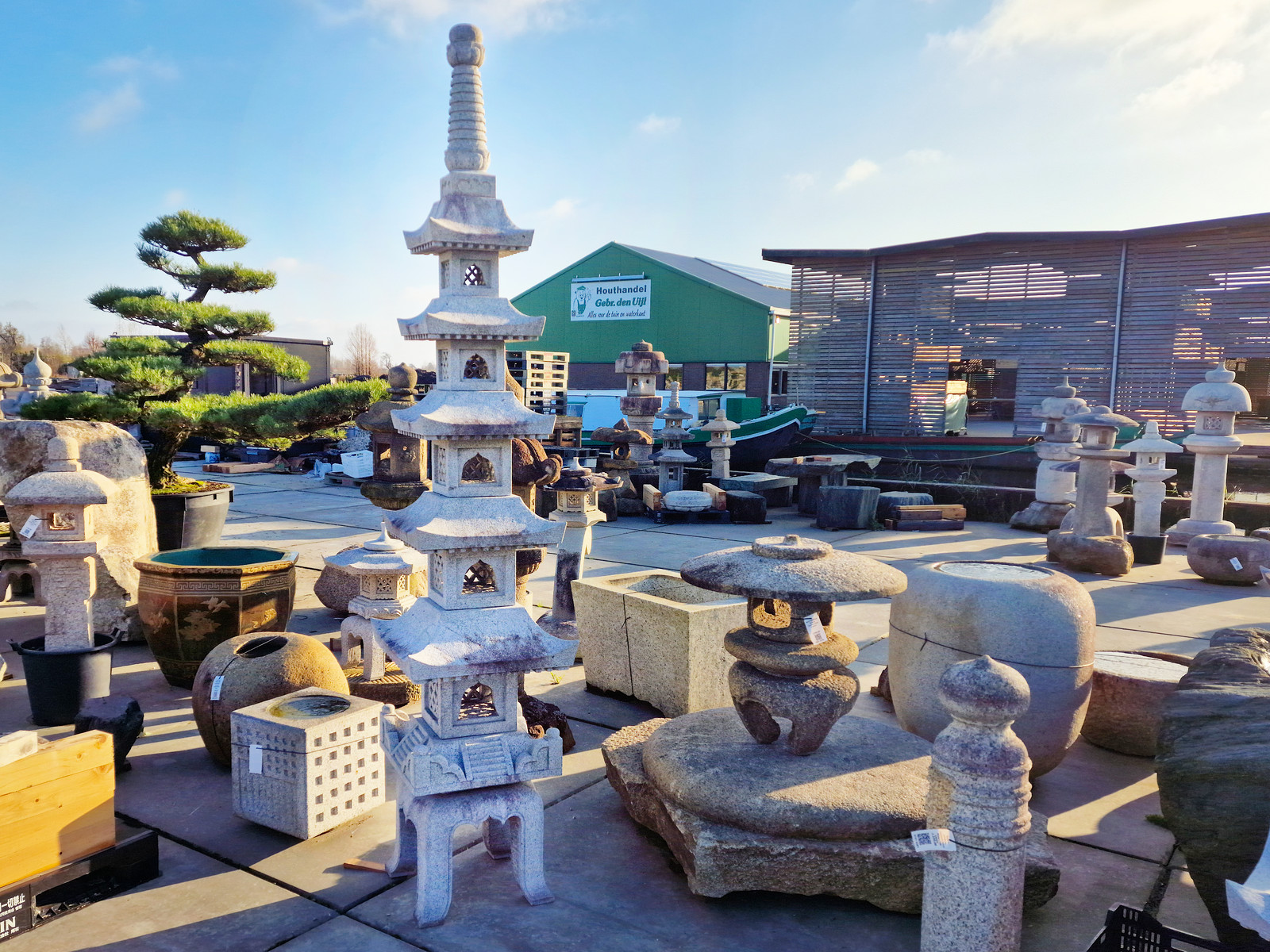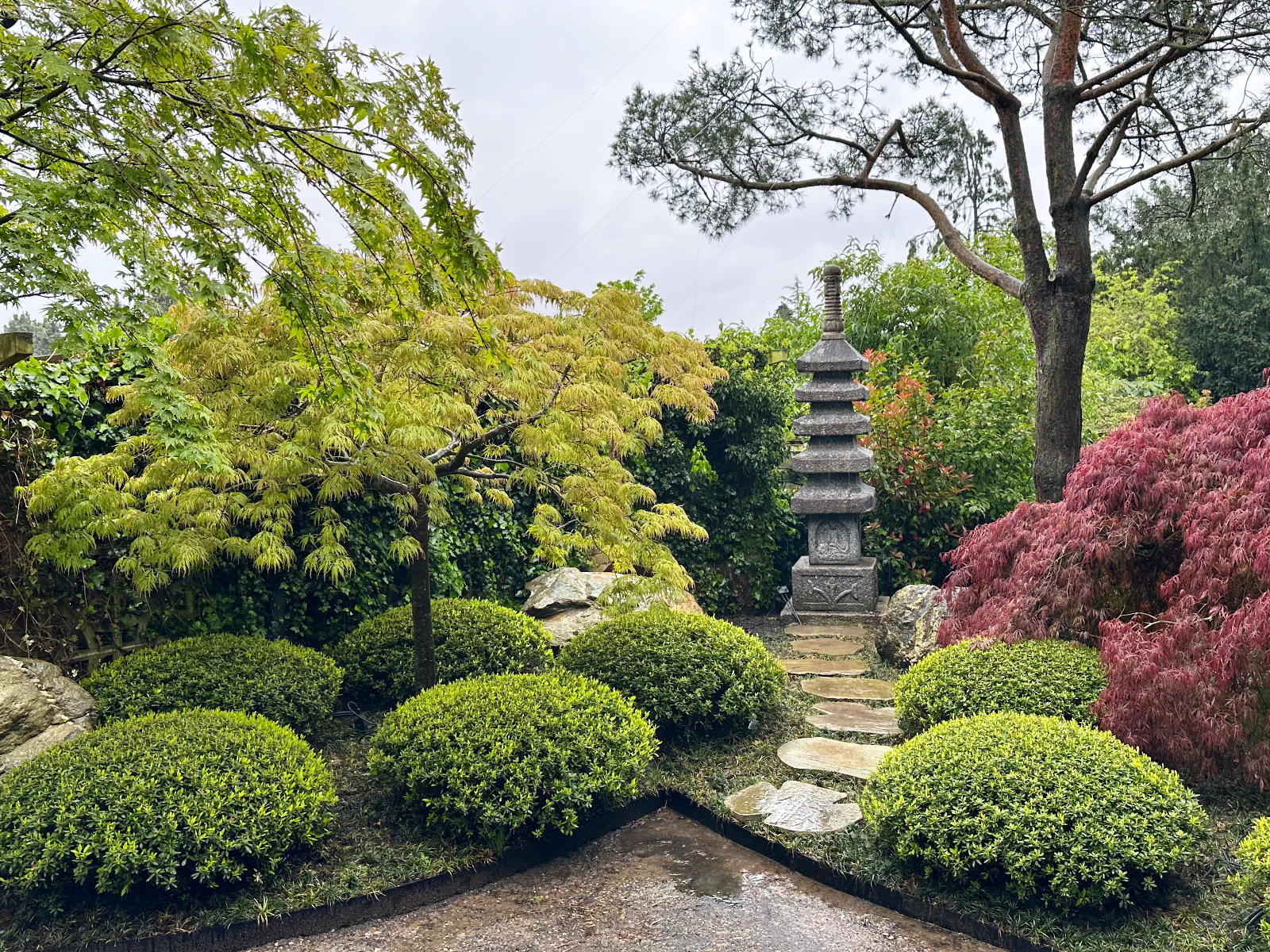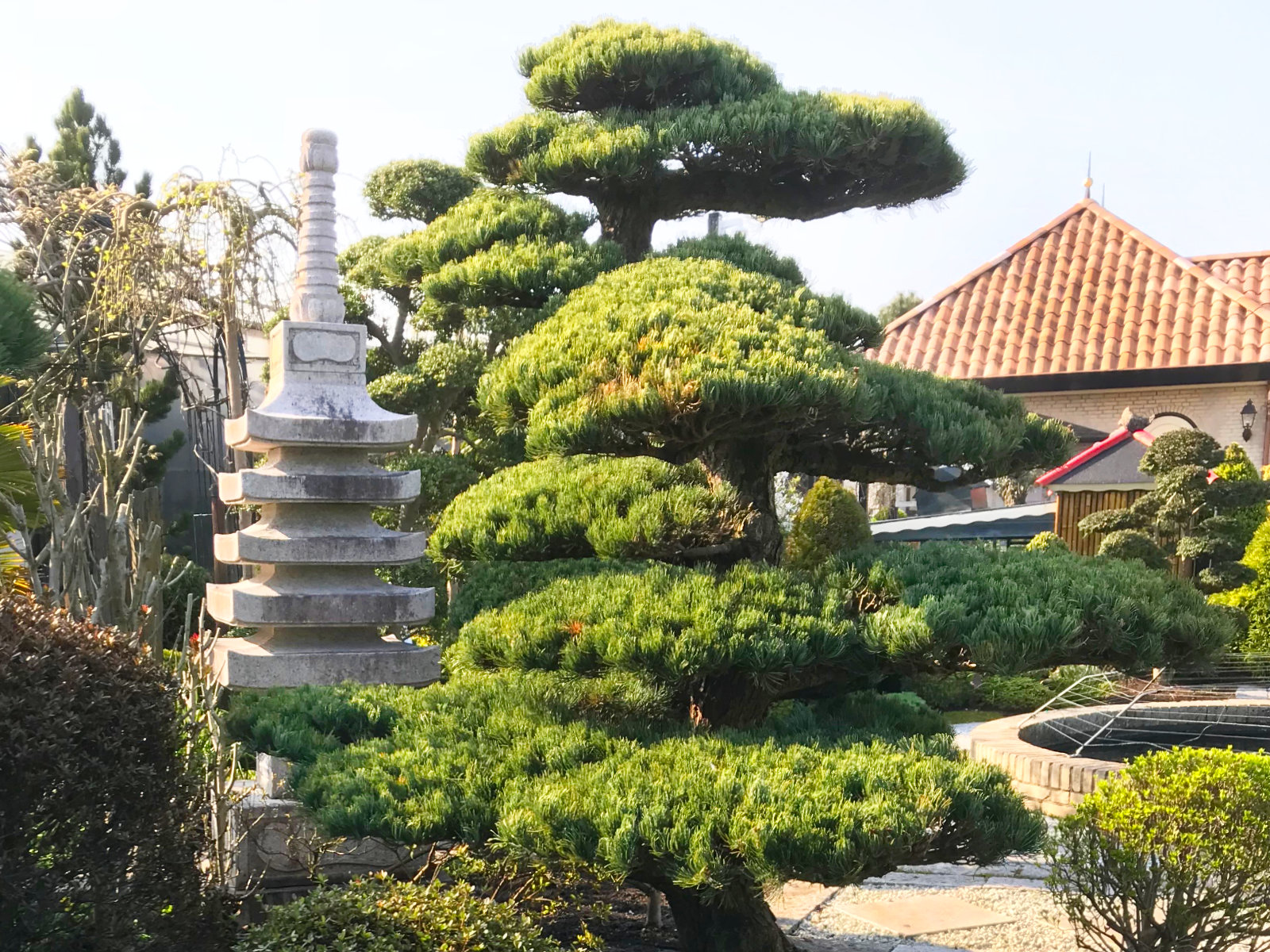Japanese Stone Pagodas – Information

Traditional Japanese Stone Pagodas: A Legacy of Culture, Craftsmanship, and Garden Harmony Introduction
Stone pagodas are among the most evocative and iconic features in traditional Japanese gardens. More than decorative objects, they are expressions of spiritual heritage, architectural elegance, and artistic restraint. Rooted in centuries of religious and cultural tradition, stone pagodas serve as focal points of quiet power, integral to the rhythm, balance, and symbolism that define the Japanese landscape garden.
At Yokoso Japanese Gardens, we offer a uniquely curated collection of authentic Japanese stone pagodas, each one a rare and enduring embodiment of Japan's garden philosophy and stonecraft. These pieces are not reproductions, but genuine artifacts or artisan-made structures that carry the essence of Japanese tradition and aesthetic purity.
Origins of the Japanese Stone Pagoda
The Japanese stone pagoda, or sekito (石塔), finds its origins in ancient India, where the Buddhist stupa was originally built to house sacred relics. As Buddhism spread to China and Korea and eventually arrived in Japan around the 6th century, the architectural form evolved. In Japan, wooden pagodas were first constructed within temple precincts, symbolizing the layers of enlightenment and the teachings of the Buddha.
As the architectural style matured, the stone pagoda emerged not only as a religious monument but also as a contemplative and aesthetic element. Over time, it became an integral component of the Japanese garden, reflecting a fusion of spiritual symbolism and natural beauty. These stone structures were admired for their stillness, their connection to the elements, and their ability to create a timeless atmosphere in carefully curated outdoor spaces.
Types of Traditional Japanese Stone Pagodas
There are various forms of Japanese stone pagodas, each with distinct architectural features and symbolic meanings. Their use in gardens depends on both design intention and spiritual resonance. The following are among the most significant types:
Gorintō (五輪塔) - The Five Roof Pagoda - The gorintō represents the five elements of Buddhist cosmology, earth, water, fire, wind, and void (or spirit). Each tier is geometrically distinct, symbolizing the transformation of matter to spirit. Traditionally used as memorial markers or grave monuments, gorintō are also placed in gardens to evoke reflection on the transient nature of life.
Tōrō (灯籠) - Stone Lanterns - Though often classified separately, many stone lanterns resemble pagodas in form and spirit. These include:
Kasuga-dōrō - A shrine-style lantern with a long pedestal and wide roof.
Yukimi-dōrō - The 'snow-viewing' lantern, low to the ground with an overhanging cap, traditionally positioned near water features.
Tahōtō / Jūsanju-no-tō (十三重塔) - These are tall pagodas with multiple eaves, often ranging from five to thirteen tiers. Historically found in temple precincts, in garden settings they symbolize elevation, harmony, and the reaching toward enlightenment. They are often placed as visual anchors or central features within a garden's overall layout.
Hōtō (宝塔) - Treasure Pagoda - The hōtō is a rare and sacred style consisting of a rounded body with a pointed top, symbolizing the holding of sacred knowledge. In garden use, it is often placed in secluded, peaceful corners to enhance contemplative space.
Placement in the Japanese Garden According to the Sakuteiki
The placement of stone pagodas in Japanese gardens is not a matter of decoration but of deep philosophical and aesthetic consideration. This principle is outlined in the Sakuteiki (作庭記), the oldest known Japanese text on garden design, written in the 11th century by Tachibana Toshitsuna. The Sakuteiki offers specific guidelines on how to harmonize man-made elements with the natural world. These principles continue to guide Japanese garden construction today, especially in the placement of stone pagodas.
Key Placement Principles:
Integration with Nature - Pagodas must not appear artificial or imposed. They are to be 'discovered' within the garden, rising subtly from moss, rock, or amidst foliage. The goal is for the structure to appear as though it emerged naturally with the landscape.
Symbolic Location - Pagodas are often positioned near water to symbolize the transience of life and the reflective quality of the soul. Alternatively, they may mark significant 'spiritual' points in the garden such as the end of a path, the entrance to a secluded area, or atop a small hill or mound to suggest elevation of the spirit.
Balance Through Asymmetry - In accordance with wabi-sabi, Japanese gardens avoid rigid symmetry. Stone pagodas are placed in a manner that balances the surrounding elements, trees, stones, and water, without mirroring them. This creates a more natural and visually stimulating landscape.
Respect for Direction and Energy Flow - Traditional placement also considers feng shui and the flow of ki (life energy). The pagoda may be oriented in a way that connects to the east (sunrise) or to other elements in the garden that support a sense of spiritual movement and grounding.
Materials Used in Traditional Stone Pagodas
Authentic Japanese stone pagodas are crafted from natural stone, selected for both aesthetic and structural qualities. Each material brings a distinct character and aging process that enhances its integration with the garden over time.
Common Materials Include:
Granite - The most widely used material, valued for its durability, fine grain, and weather resistance. Granite pagodas develop a soft patina over time, blending beautifully with moss and vegetation.
Andesite - A volcanic rock with a darker tone and smooth texture, often used for more minimalistic or temple-inspired designs.
Tuff and Sandstone - Softer stones used in historic pieces; while less durable than granite, they age with grace and show the passage of time with more immediate effect.
Antique and Reclaimed Stone - At Yokoso Japanese Gardens, we also offer antique pagodas and those made from reclaimed Japanese stone, each with its own provenance and story.
Exclusively Available at Yokoso Japanese Gardens
At Yokoso Japanese Gardens, we take pride in offering stone pagodas that are more than garden ornaments, they are cultural artifacts and artistic statements. Our collection includes: Rare antique pagodas sourced directly from Japan. Artisan-crafted pieces made by traditional stone carvers. Custom garden consultation and placement guidance based on traditional principles.
Unlike mass-produced replicas, each stone pagoda we offer has been selected for its authenticity, craftsmanship, and alignment with the values of Japanese garden design. Whether you're creating a small courtyard garden or a larger strolling garden (kaiyū-shiki teien), our stone pagodas provide a genuine link to Japan's living garden tradition.
Conclusion
Traditional Japanese stone pagodas are powerful symbols of history, spirituality, and balance. Their quiet presence in the garden transforms the space, inviting contemplation, marking sacred transitions, and connecting the viewer with something timeless.
At Yokoso Japanese Gardens, we are honored to make these rare and beautiful structures available to garden lovers, designers, and collectors worldwide. Each pagoda we offer is a piece of cultural heritage, ready to become a lasting presence in your own landscape.
If you are seeking an authentic Japanese stone pagoda, crafted with care, steeped in tradition, and placed with intention, look no further than Yokoso Japanese Gardens
#JapaneseGarden #StonePagoda #YokosoJapaneseGardens #Toro #JapaneseStoneLantern #ZenGarden #Sakuteiki #JapaneseLandscaping #GardenInspiration #ZenAesthetics #WabiSabi #PagodaArt #GardenSymbolism














Contact Yokoso Japanese Gardens